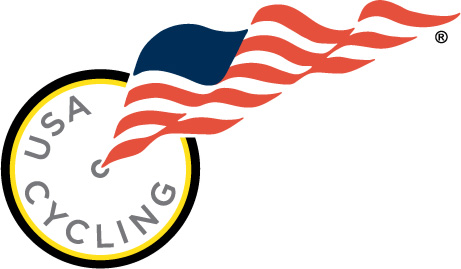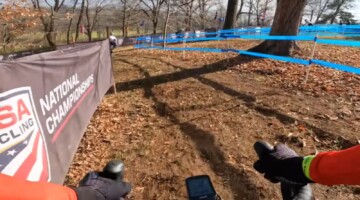USA Cycling has been in the news quite a bit recently. With new CEO Derek Bouchard-Hall at the helm (See his first-ever media interview with Cyclocross Magazine here), he’s had time to survey the landscape, and changes are coming.
Nobody Likes Losing
First and foremost will be the goal of addressing the organization’s financial health. Despite this summer telling Cyclocross Magazine “…we secured financial footing, which we didn’t always have. Now we’re not operating at a loss,” Bouchard-Hall, after a few more months studying the books, revealed to Velonews last week that USA Cycling will be operating at a $1 million loss for 2015. It’s apparent that changes in fees and focus will both be necessary to reverse that loss over time.
The changes will need to come at least in part from increased revenue from racers and promoters. These changes are starting to be detailed. The first change that looks to be widely embraced is the reversal of a major component of the license fee changes announced two years ago: the increase in one-day license fees. That change at the time left us scratching our heads, in that it seemed completely counterproductive to growing the sport and lowering the barrier to try bike racing. In our poll, 71% of you also disagreed with the changes. It’s now clear that USA Cycling was listening, and bringing back one-day license fees to $10 from $15 for road, track and cyclocross races. By reducing the barrier to entry for new racers, USA Cycling hopes to increase its membership base over time, and thus its annual revenues.
In addition to the one-day license fee reduction, USA Cycling announced a plan to increase the revenues returned to local cycling associations, along with a slew of rider license fee changes. These include a decrease in International Junior racing licenses fees, an increase in collegiate-only racing license fees, an increase in Professional, Elite, and Team license fees, and small increases in per-rider insurance charges to promoters. There’s also a new Anti-Doping fee on top of some domestic licenses (detailed below).
There are new licensing options coming as well, in the form of a new non-beginner one-day license option, for $25. While not cheap, this option should at least eliminate the need for non-beginners to sandbag USA Cycling beginner races if they only compete in one or two races a year (or rarely race outside of their non-USAC region). It’s not clear at this time as to whether racers in non-USA Cycling areas like Oregon and Northern California would be able to use this option to race Nationals.
See the full list of the USA Cycling 2016 Fee Schedule here.
Time to Expand, Compete
One upcoming change will be to also increase revenues and memberships through expanding into other areas of cycling USA Cycling currently does not dominate in. Bouchard-Hall, while complimenting us on our popular April Fool’s Day article on USA Cycling’s upcoming regulation of gravel events, calling it “one of the best…ever”, also revealed the subtle, predictive nature of our satire, explaining to Caley Fretz that USA Cycling “want(s) to play in that space, get more promoters to say ‘I want to do this with USA Cycling, because they offer me something.’”
The timing of the announcement is interesting, as North American Cycle Sport (NACS), an alternative sanctioning body for cycling events, just launched in October, and its CEO, Tod Manning, told Cyclocross Magazine this week that two of the major benefits NACS will offer the racing community are lower licensing fees ($9.35 for a one day, or a package for five one-day licenses for $35), as well as a bigger percentage of revenues being returned to the local cycling associations.
Bouchard-Hall, with an MBA from Harvard and having raced professionally and in the Olympics, probably knows a thing or two about competition, and may be trying to fight off some competition in his new role with the upcoming 2016 changes.
See the full details of the changes announced by USA Cycling in the press release below.
USA Cycling 2016 Changes Press Release
USA Cycling announced Tuesday a wide range of changes to policies and fees in 2016 designed to lower barriers to entry, increase support of amateur racing and grassroots development, and step up the fight against doping within American cycling—all key objectives for USA Cycling in 2016.
Highlighting the policy changes are: an increased Local Association rebate, which will put more money into the hands of those that manage amateur racing at the local level; a reduction in the one-day beginner license fee for road, track and cyclo-cross events from $15 to $10, thereby reducing a key barrier to entry; improved economics for mountain bike promoters, with a $5 rebate on one-day licenses, the elimination of permitting fees and the removal of the need for one-day licenses for practice days; and the addition of a RaceClean anti-doping surcharge to upper-category racers that will be used to significantly increase the number of anti-doping tests in the U.S. next year, particularly at the amateur level.
“I’ve received a lot of very helpful feedback from our members since starting as CEO this summer, and the top items that keep coming up are anti-doping and an increased focus on amateur racing,” said USA Cycling CEO Derek Bouchard-Hall. “Through close collaboration with all constituents— from the positive and passionate to the frustrated— we’ve quickly built plans that start to show real change. I think we have found excellent ways to start to address these issues without putting an unreasonable cost onto our members, which was an important goal for us. I hope that members will be excited about our changes for 2016.”
In 2015, Local Associations received a $10 rebate for each adult racing membership sold in their regions, which is intended to help grow and improve amateur racing on a local level. In 2016, Local Associations will still receive $10, plus $0.17 per competitive racer day, increasing grassroots funding by roughly 20 percent. Additionally, Local Associations will no longer be required to contribute to the USA Cycling RaceClean program, saving each Local Association up to $3,500 per year.
Membership fees for domestic racers will not increase, but a one-time $5 RaceClean anti-doping surcharge will be added to Category 1 mountain bike, and Category 2 and 3 road, track and cyclo-cross memberships. A one-time $25 RaceClean anti-doping surcharge will be added to pro mountain bike and Category 1 road, track and cyclo-cross memberships, and a one-time $50 RaceClean anti-doping surcharge will be added to UCI pro road licenses.
USA Cycling’s event rider surcharge to race directors will see a 4 percent increase for 2016, raising from $3.60/racer day to $3.75/racer day, strictly to keep in line with rising costs for event liability coverage. This fee remains significantly below market rates for similar coverage, as USA Cycling again leverages its buying power of 600,000 racer days to negotiate exhaustive coverage for all members of the cycling community.
Read more about the USA Cycling insurance policy here.
“We were loath to increase the racer day surcharge, but we felt it was necessary for the most equitable distribution of our rising insurance costs,” said Bouchard-Hall. “And racers must understand how comprehensive and complete our policy is – no other insurance coverage comes close to the protection level of our policy. Anything less leaves our community at risk, including our racing members, which we simply will not do.
“USA Cycling is in a somewhat difficult financial situation for 2016, but we have worked hard to avoid burdensome price increases on most of our members. By cutting back costs and tightening our belt in Colorado Springs, we are able to do more for grassroots development and raise the bar in our continued fight against doping without an across-the-board membership fee increase.
“Given the short time since I’ve joined USA Cycling, wholesale business model changes were not feasible for 2016, so some of these changes may appear small, but they could have a large impact and are indicative of our change in direction. We look ahead to the coming months and years to make more substantial changes in an effort to give race directors and members more value from USA Cycling.”
Other notable areas of change:
- A new one-day license option will be available for former racing members in non-beginner racing categories that want to try racing again without becoming an annual member. Priced at $25, this one-day license will be available as a one-time option for any upper-category former racer through his or her online account starting in Spring 2016.
- Race director certifications are no longer required.
- Recreational ride event surcharges will increase from $2 per rider/day to $2.25 per rider/day for first 1,000 participants, but will remain at $2 per rider/day for next 1,000 participants, and will decrease to $1.80 per rider/day for all participants after the first 2,000 riders. This tiered pricing structure will assist USAC’s efforts to support larger participation events.
- International junior licenses will drop from $175 to $100.
- Professional, elite individual and team membership fees will increase to reflect the greater allocation of resource USA Cycling makes to elite cycling.
- Collegiate-only memberships will increase to $45 to fund collegiate programs intended to improve safety and quality of collegiate cycling.
A full list of 2016 fees is available here.


























